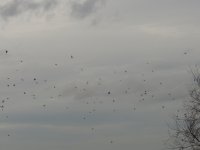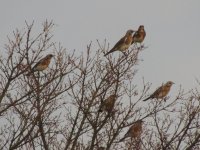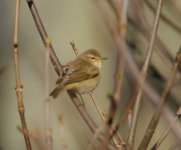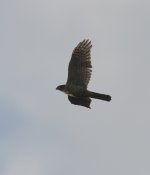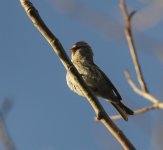Well here's some other thoughts on that Chiffchaff. On first impression the second picture, if anything, makes the bird look more interesting; though blurred it appears to confirm that the ear coverts are very pale, the eyestripe is very weak (especially on the lores), that the crown and nape are indeed brown, that (compared to the colour of the nearby buds) brown is quite dominate in the mantle and scapulars, and it has a quite prominent supercillium. Also the throat and the belly appear to be very white and the bird generally appears quite washed out and pale.
However the fore-supercillium (or just the area above the eye on the first photo), as well as the limited wash on the upper edge of the flanks, appears (to my eyes at least) to be at the yellow end of buff (rather then brownish or 'tobacco'). This along with possible olive/green blotches in the mantle would put it in the 'difficult' as opposed to 'classic' end of Siberian (these birds are discussed at great length on Birdingfrontiers).
Also (judging by the shadows and gloss on the buds) it appears to be in fairly bright direct sunlight and also against a palish background. This may have the effect of making it appear paler then it's 'true' colours, intensifying the white in the underparts, and also reducing the strength of the facial pattern.
To get any further I think you would have to gain prolonged observations in different lighting conditions (in and out of shade for example), noting carefully the exact circumstances, and, of course, hear it call.
As things stand i'd stick with my initial impression of Common Chiffchaff, but to me it doesn't look (at least from photographic impression) like a 'typical' example of collybita.
There must be a chance its still around so i'd be interested if anything further came of it.




